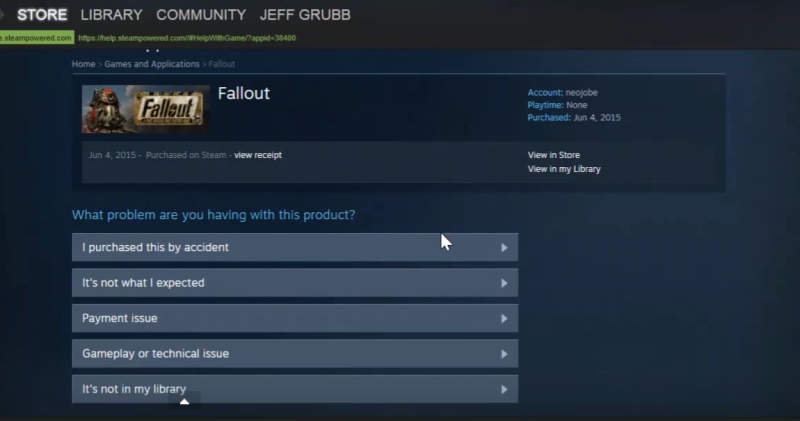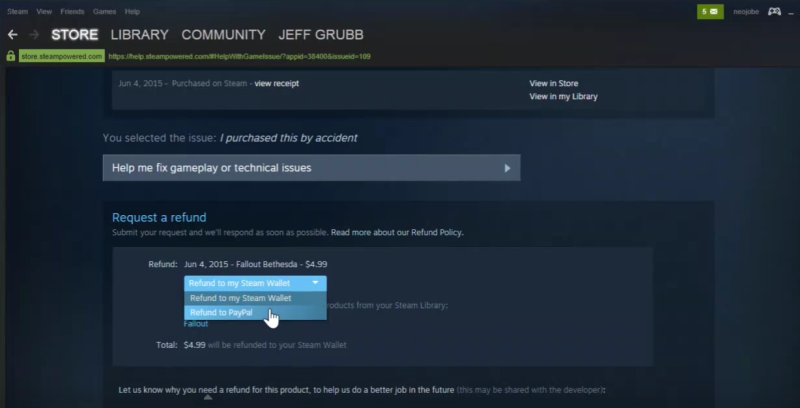Valve has introduced something new: a way to request a refund for any game you buy as long as it’s less than two weeks old and you’ve played it for less than two hours. But how, exactly, does this all of this work? Let’s find out.
I went ahead and bought a game, the original Fallout, for $5 on Steam. I used my PayPal account. Immediately after purchasing it, I went through the process to get my $5 back. It was incredibly simple — although my refund is pending approval.
Here’s how it works in a video, and you can read the steps below:
AI Weekly
The must-read newsletter for AI and Big Data industry written by Khari Johnson, Kyle Wiggers, and Seth Colaner.
Included with VentureBeat Insider and VentureBeat VIP memberships.
Here’s how to get a refund on Steam:
- Find the game in your library.
- On the right hand side of the Steam client, find and click the link that says “Support.”
- It will take you to this screen:
- I selected “I purchased this by accident.”
- Steam then presents you with two options. One will help you fix any technical problems. The other is “I’d like to request a refund.”
- Clicking at will take you to this screen:
- Here you can either select to have the money go into your Steam Wallet or back to your source of payment. I, of course, selected PayPal.
- You can then give a reason why you need your money back.
- Submit your request.
- And that’s it!
Once I actually started the process and clicked “support,” it took me less than 60 seconds. That’s pretty nifty.
But some people are worried that gamers will try to abuse the system, but my request is only pending. I’d imagine that Valve is now checking for things like whether I got the achievement for beating Fallout or if I’ve requested 20 other refunds in the last day.
Others are even concerned that Steam refunds default to “Steam Wallet” like in the image above.
“Steam and developers are not equal partners in offering refunds,” indie developer Andrew Pellerano wrote in a blog. “Steam’s actually got no skin in the game! They are getting their money no matter what. Steam’s own literature on the refund program states ‘we hope this will give you more confidence in trying out titles that you’re less certain about.’ Sure you do, Steam, because to you this refund program is a way to increase sales by lowering purchase barriers. To developers, it’s the difference between getting paid or not.”
And while Pellerano’s concerns are possible, we haven’t seen any evidence to suggest developers will make less — yet. And the promise of potential refunds will lower the purchase barrier, and that could have a positive effect on developer’s sales — though we haven’t seen any evidence of this so far, too. It is the same logic that compels companies to offer 60-day money-back guarantees. It increases trust and revenues, according to some research. Many consumers end up keeping the product even if they bought it with the intent of using the refund.
But who knows? Maybe this will completely destroy all developer revenues. We should probably wait until some evidence proves that, though, before burning refunds to the ground.
VentureBeat's mission is to be a digital town square for technical decision-makers to gain knowledge about transformative enterprise technology and transact. Learn More


